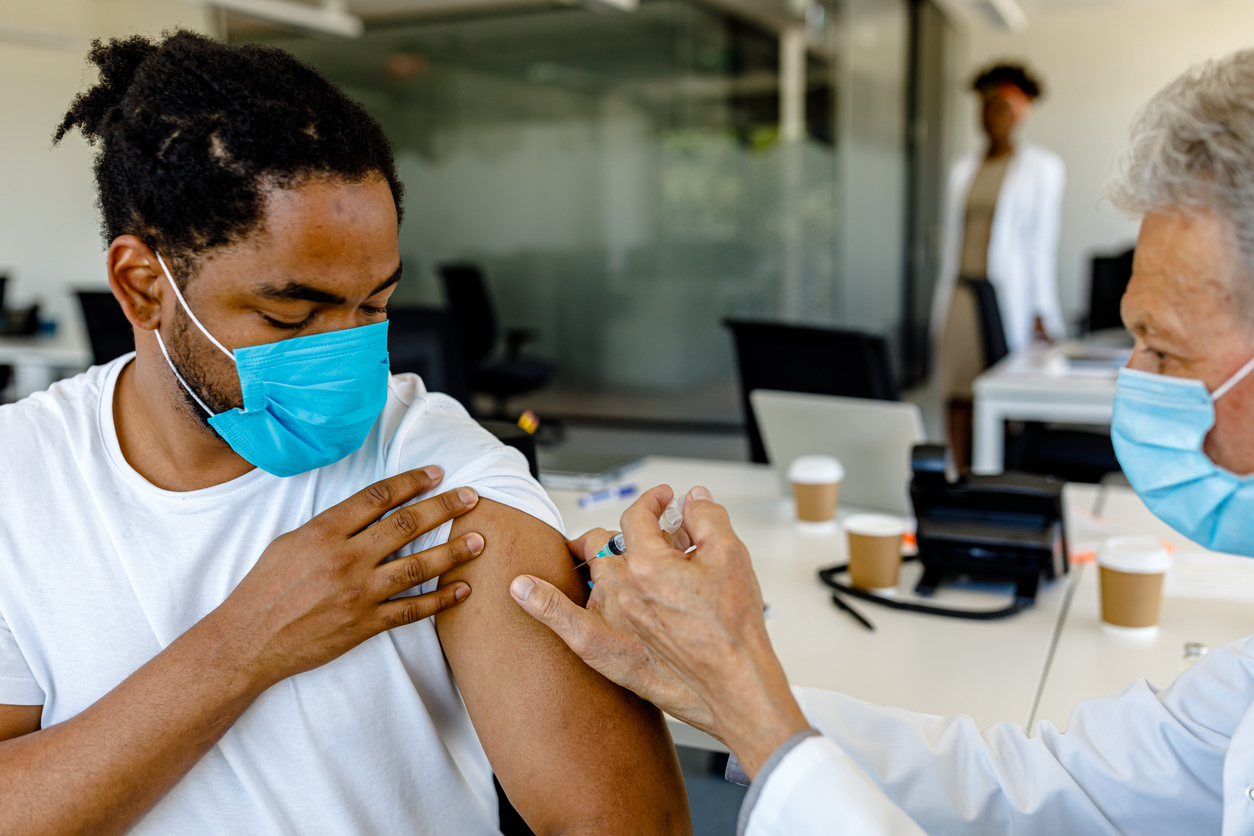Top Virus Expert Just Issued This Urgent Warning to All Vaccinated People
The country's progress with the COVID pandemic could be hampered by this one thing.

With stripped back mask mandates and the reversal of vaccine requirements, many of us have been dreaming of a COVID-free summer—or at least, as virus-free as we can get in the U.S. Even top White House COVID adviser Anthony Fauci, MD, has furthered the idea that the country is steadily moving away from the worst of its pandemic phase. But with cases climbing back up, new Omicron subvariants emerging, and virus immunity waning, this promise of progress seems to be more and more uncertain as days go by.
Basahin ito sa susunod:Dr. Fauci Just Gave This New Warning to All Americans—Even the Boosted.ae0fcc31ae342fd3a1346ebb1f342fcb
Currently, COVID infections in the U.S. are up about 50 percent and hospitalizations are also rising, according to White House COVID-19 response coordinator Ashish Jha, MD. The infectious disease expert said that the increase is being largely driven by the Omicron subvariants, and that states in the Northeast are currently seeing some of the highest upticks right now.
After cases began rising around March 20, they are now up three to four times in states like New York, Connecticut, Rhode Island, and Massachusetts. But Jha also explained that virus experts are seeing an interesting trend emerge from these states. Throughout the pandemic, officials have consistently seen deaths start to climb in an area three weeks after infections started rising. With that in mind, it was expected that Northeastern states would see death rates spike by around April 10—but that hasn't happened, according to the virus expert.
"Deaths are up a bit, but about six weeks after cases began rising, not what you would have expected," Jha explained in a series of tweets on May 8, noting that even though hospitalization are also up some in these states, they are not as high as expected following the rise in infections.
So why are cases rising without a significant spike in hospitalizations and deaths? According to Jha, there are three main factors: boosters, treatments, and testing. "In the northeast we're seeing a real split between cases and deaths … These states do more tests, [and] have higher booster rates than many other places," he explained.
But while this is good news for Northeastern states now seeing high infection rates, it may indicate trouble for other areas. "Unfortunately, other parts of our nation have lower booster rates and less testing. So the virus can spread more easily without detection and the population is less well protected, which worries me for the weeks [and] months ahead as [Omicron subvariant] BA.2.12.1 spreads to other, less boosted places," Jha said.
According to the Centers for Disease Control and Prevention (CDC), 46 percent of all adults eligible for a booster in the U.S. have gotten their additional shot. But the rate varies widely from state to state, with those in the South having some of the lowest booster rates in the entire country. In fact, the five states having boosted the fewest number of fully vaccinated individuals are all Southern states, per Becker's Hospital Review.
This includes Georgia at just 37.7 percent, Oklahoma at 37.6 percent, Mississippi at 37.4 percent, Alabama at 35.7 percent, and North Carolina at 26.6 percent. To compare, 60.5 percent of fully vaccinated residents in Vermont—the state with the highest booster rate—have received an additional shot. These low booster rates could join forces with other concerning factors in the South to create a summer COVID surge in these states, especially considering similar spikes were seen over the past two summers.
"For some reason, we see a seasonality in these peaks. We're seeing a very high rate of cases in the South during the summer months, possibly because so many people are inside because its so hot there," Mercedes Carnethon, PhD, an epidemiologist at the Northwestern University Feinberg School of Medicine, told The Washington Post.
To avoid this fate, most virus experts have just one recommendation for vaccinated people: "If you have been vaccinated and are eligible for a booster, make sure to get it," Fauci warned during a May 2 interview with Batas ng banyaga. "Now."
Basahin ito sa susunod:Boosters Won't Protect You Against Omicron If You've Done This, Study Finds.

Huwag malinlang sa pamamagitan ng "libreng groceries" Facebook post

